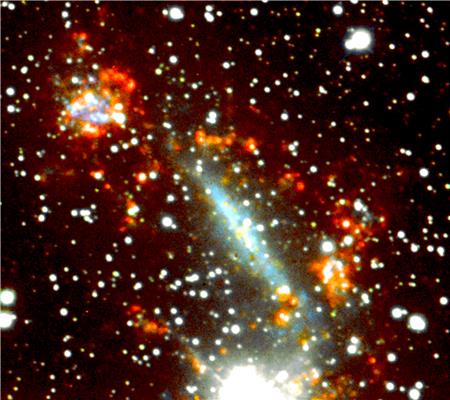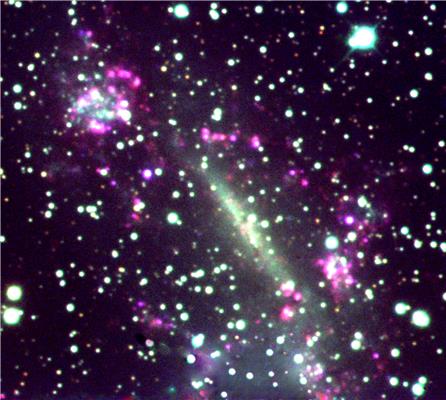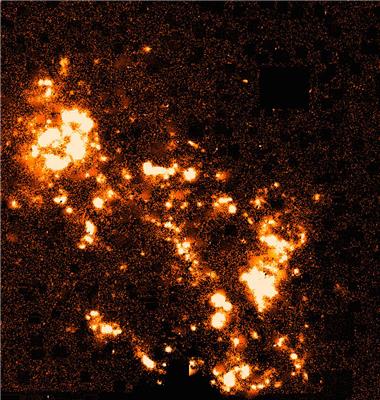| Online: | |
| Visits: | |
| Stories: |

| Story Views | |
| Now: | |
| Last Hour: | |
| Last 24 Hours: | |
| Total: | |
Spectacular Galaxy Collision Sets Off Cosmic Fireworks
Colour image of the collision, made by combining the CTIO H-alpha image with red and blue images in alternative colours. In this rendition the bright star to the south has been left in place while the active ring of star formation centred on the elongated galaxy at the centre of the image has been rendered a fiery orange. The images were taken on the Cerro-Tololo InterAmerican Observatory (CTIO) 4-m telescope in Chile.
Such systems are very rare and arise from “bulls-eye” collisions between two galaxies of similar mass. Shockwaves from the collision compress reservoirs of gas in each galaxy and trigger the formation of new stars. This creates a spectacular ring of intense emission, and lights up the system like a Catherine wheel firework on bonfire night.
Galaxies grow through collisions but it is rare to catch one in the process, and extremely rare to see a bull’s-eye collision in progress. Fewer than 20 systems with complete rings are known.
Kathryn’s Wheel was discovered during a special wide field survey of the Southern Milky Way undertaken with the UK Schmidt Telescope in Australia. It used a narrow wavelength optical region centred on the so-called red “H-alpha” emission line of gaseous hydrogen. This rare jewel was uncovered during a search of the survey images for the remnants of dying stars in our Milky Way. The authors were very surprised to also find this spectacular cosmic ring, sitting remotely behind the dust and gas of the Milky Way in the constellation of Ara (the Altar).
The newly discovered ring galaxy is seven times closer than anything similar found before, and forty times closer than the famous ‘Cartwheel’ galaxy. The ring is located behind a dense star field and close to a very bright foreground star, which is why it had not been noted before. There are very few other galaxies in its neighbourhood; the odds of a collision in such an empty region of space are very low.
Professor Parker said “Not only is this system visually stunning, but it’s close enough to be an ideal target for detailed study. The ring is also quite low in mass – a few thousand million Suns, or less than 1% of the Milky Way – so our discovery shows that collision rings can form around much smaller galaxies than we thought.”
Smaller galaxies are more common than large ones, implying that collisional rings could be ten times as common as previously thought. The authors intend to carry out more detailed studies on larger telescopes since the discovered galaxy is currently the only one of its kind close enough to permit study in such exquisite detail.
Royal Astronomical Society (RAS)
Source:






